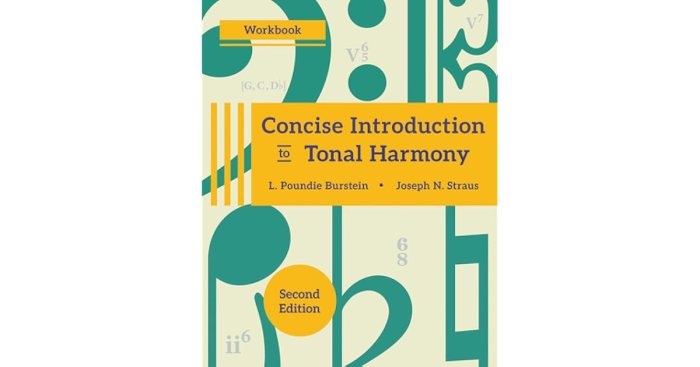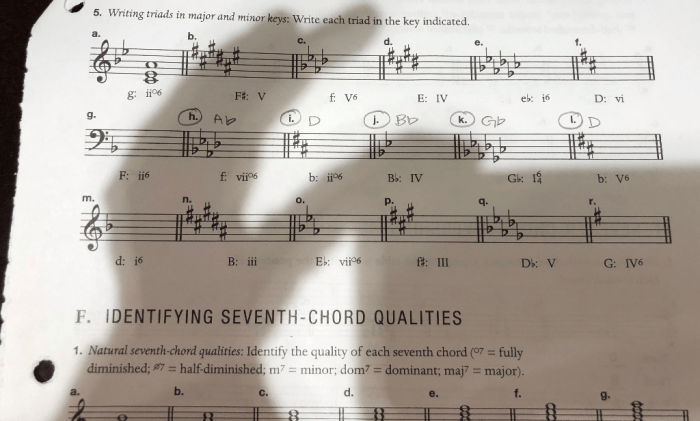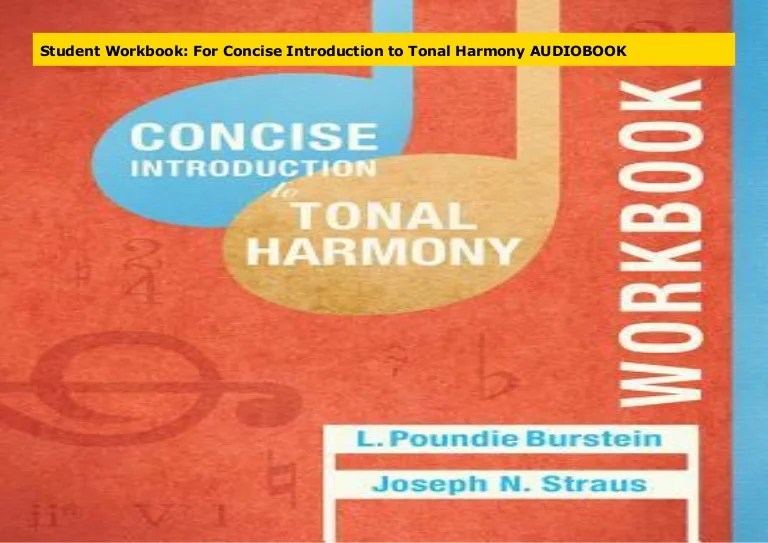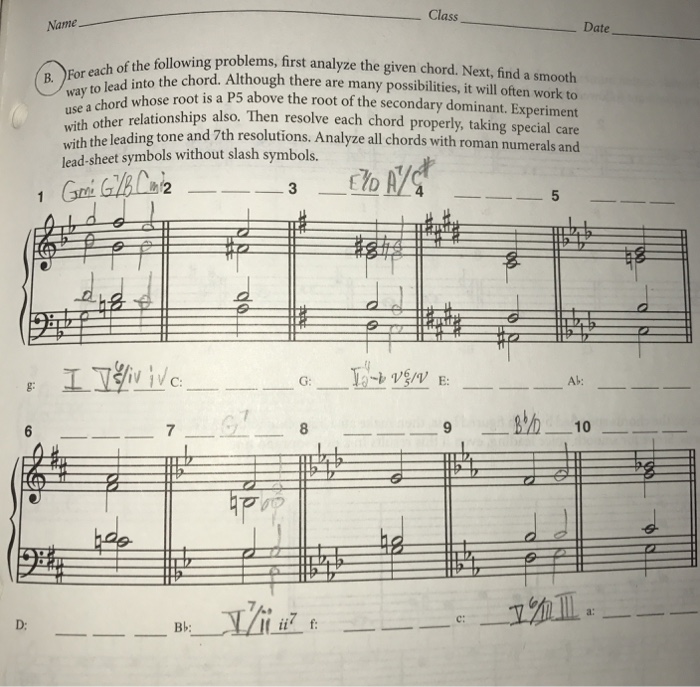The Concise Introduction to Tonal Harmony 2nd Edition Workbook Answers PDF provides a comprehensive and accessible guide to the fundamental principles of tonal harmony. Designed for students and musicians of all levels, this workbook offers a clear and systematic approach to understanding the structure, function, and application of chords and harmonic progressions.
Through a series of engaging exercises, assignments, and examples, this workbook guides learners through the intricacies of tonal harmony, fostering a deep understanding of its theoretical foundations and practical applications.
1. Concise Introduction to Tonal Harmony 2nd Edition Overview

The “Concise Introduction to Tonal Harmony, 2nd Edition Workbook” is a comprehensive resource designed to reinforce the theoretical concepts presented in the textbook of the same name. It provides a systematic approach to developing practical skills in tonal harmony through a series of guided exercises and assignments.
The workbook is intended for students of music theory and composition, particularly those studying tonal harmony at the undergraduate level. It is also a valuable tool for musicians who wish to deepen their understanding of tonal harmony and improve their compositional skills.
The workbook has been developed over many years of teaching experience and has been refined based on feedback from students and instructors. It has become a widely adopted resource in music theory curricula around the world.
2. Workbook Content Analysis
The workbook covers a wide range of topics in tonal harmony, including:
- Diatonic and chromatic harmony
- Triads and seventh chords
- Inversions and non-chord tones
- Harmonic progressions and cadences
- Modulation and harmonic analysis
The workbook is organized into 21 chapters, each of which focuses on a specific topic. The chapters are further divided into sections, which provide a logical progression of learning objectives. Each section includes a brief explanation of the topic, followed by exercises and assignments that reinforce the concepts presented.
The exercises and assignments in the workbook are varied and engaging. They include:
- Written exercises that require students to analyze and write chords and progressions
- Ear training exercises that develop students’ ability to recognize and identify chords and progressions
- Compositional exercises that challenge students to apply their knowledge of harmony to create original musical works
3. Pedagogical Approach: Concise Introduction To Tonal Harmony 2nd Edition Workbook Answers Pdf

The pedagogical approach used in the workbook is based on the principles of active learning and guided discovery. The workbook provides students with clear explanations and examples, but it also encourages them to engage with the material in a hands-on way through the exercises and assignments.
The use of examples and illustrations is an important aspect of the workbook’s pedagogical approach. The examples and illustrations help to clarify the concepts presented and to make them more accessible to students. They also provide students with a visual representation of the musical concepts being discussed.
The workbook’s teaching methods have been proven to be effective in helping students to develop a deep understanding of tonal harmony. The workbook has been used successfully in music theory courses at universities and conservatories around the world.
4. Assessment and Evaluation

The workbook provides a variety of methods to assess student progress. These methods include:
- Written assignments that require students to demonstrate their understanding of the concepts presented in the workbook
- Ear training exercises that assess students’ ability to recognize and identify chords and progressions
- Compositional assignments that challenge students to apply their knowledge of harmony to create original musical works
The feedback provided to students on their work is detailed and constructive. The feedback helps students to identify their strengths and weaknesses and to improve their understanding of the material.
The workbook’s assessment system is effective in helping students to track their progress and to identify areas where they need to improve. The feedback provided to students helps them to develop a deeper understanding of tonal harmony and to become more proficient in its application.
5. Supplementary Materials
The workbook is accompanied by a number of supplementary materials, including:
- An answer key that provides solutions to the exercises and assignments in the workbook
- A glossary of terms that defines the key terms used in the workbook
- A set of audio recordings that provide examples of the musical concepts discussed in the workbook
These supplementary materials are designed to enhance student learning and to make the workbook more accessible to students. The answer key provides students with a way to check their work and to identify areas where they need to improve. The glossary of terms provides students with a quick and easy way to look up the definitions of the key terms used in the workbook.
The audio recordings provide students with a way to hear the musical concepts discussed in the workbook and to develop their ear training skills.
The supplementary materials are a valuable addition to the workbook and they help to make it a more comprehensive and effective resource for students of tonal harmony.
6. Recommendations for Use

The workbook can be used effectively in the classroom or in a self-study setting. In the classroom, the workbook can be used as a supplement to the textbook or as the primary resource for a course in tonal harmony. In a self-study setting, the workbook can be used by students who wish to learn tonal harmony at their own pace.
The workbook can be used in a variety of ways. It can be used as a stand-alone resource, or it can be used in conjunction with other resources, such as a textbook or a music theory software program.
The workbook is a valuable resource for students of tonal harmony. It provides a clear and concise introduction to the subject, and it offers a variety of exercises and assignments that help students to develop their skills in tonal harmony.
The workbook is also accompanied by a number of supplementary materials that enhance student learning and make the workbook more accessible to students.
Q&A
What is the purpose of the Concise Introduction to Tonal Harmony 2nd Edition Workbook?
The workbook provides a comprehensive guide to the principles of tonal harmony, offering exercises and assignments to reinforce understanding.
Who is the intended audience for this workbook?
The workbook is designed for students and musicians of all levels, from beginners to advanced learners.
What are the key topics covered in the workbook?
The workbook covers a wide range of topics, including chord construction, harmonic progressions, voice leading, and modulation.